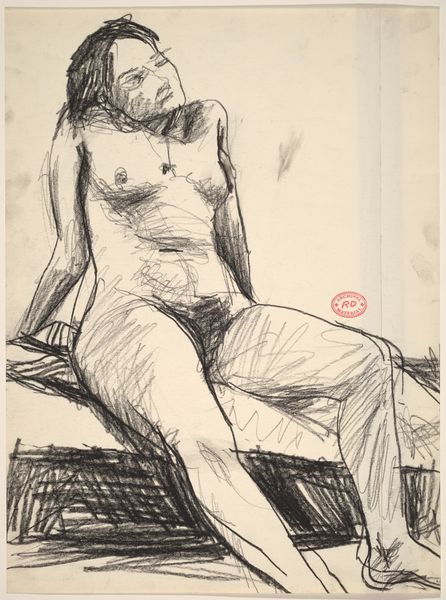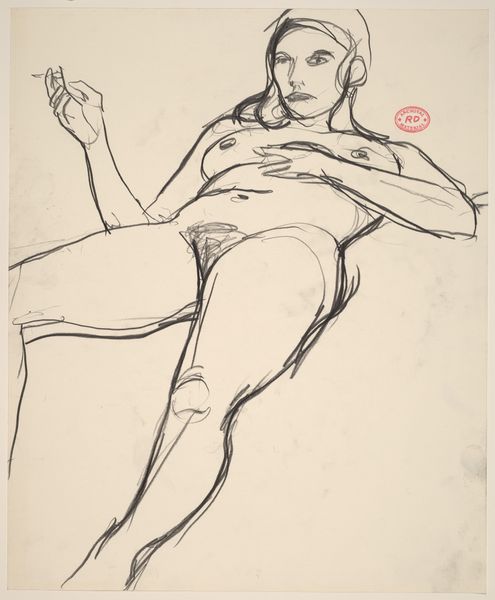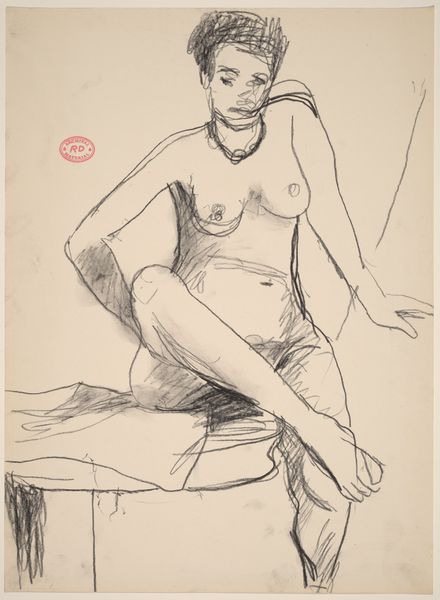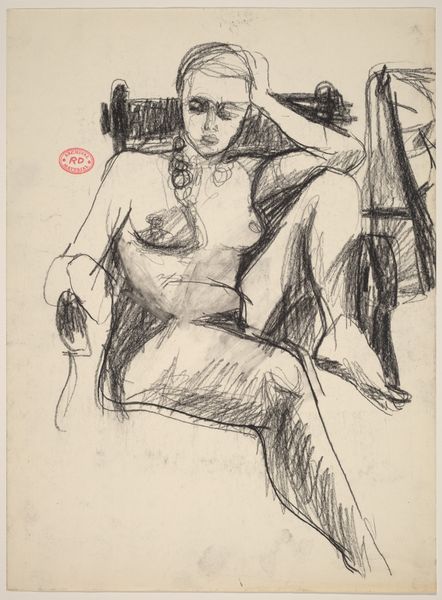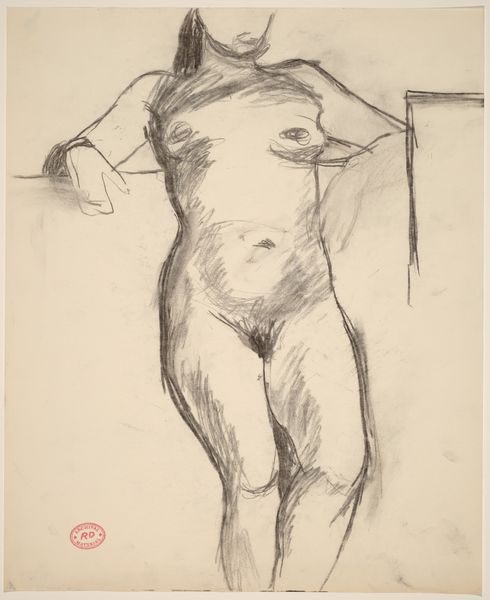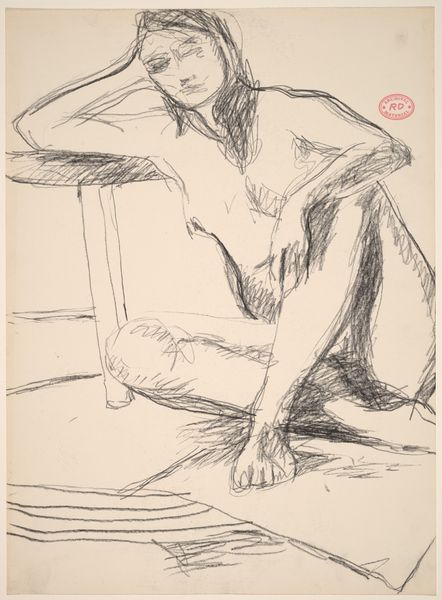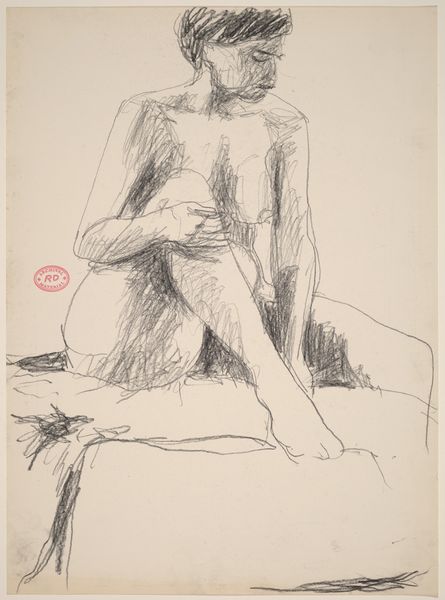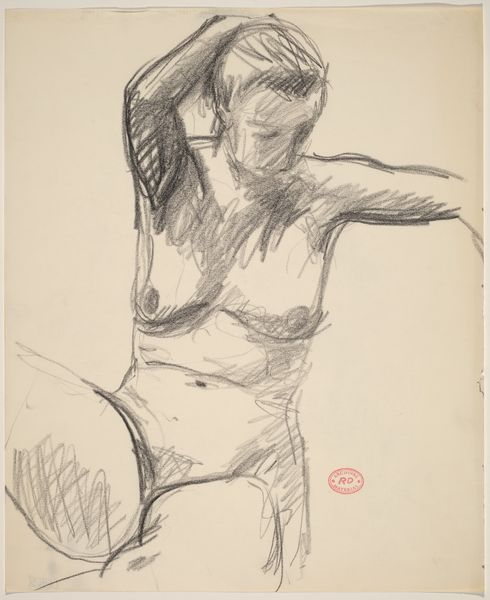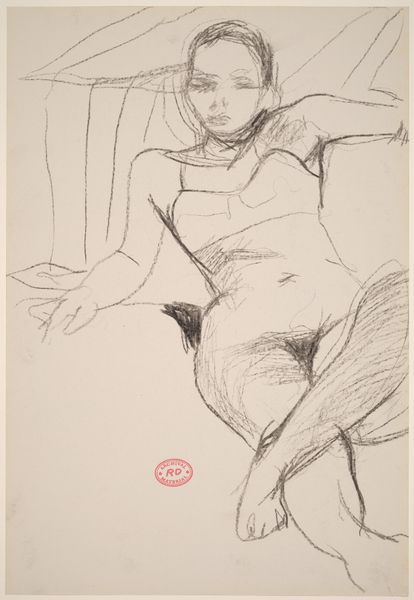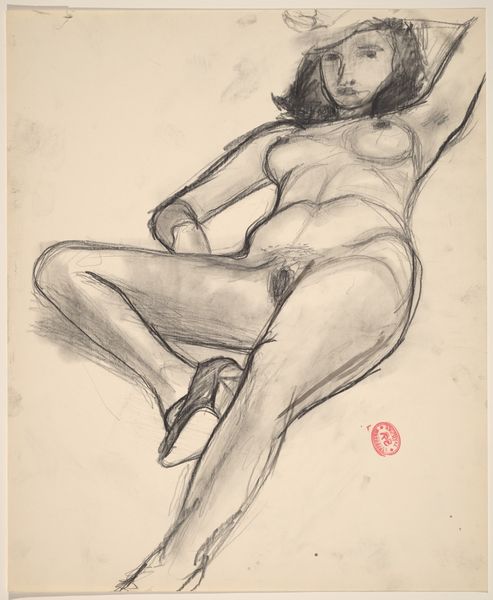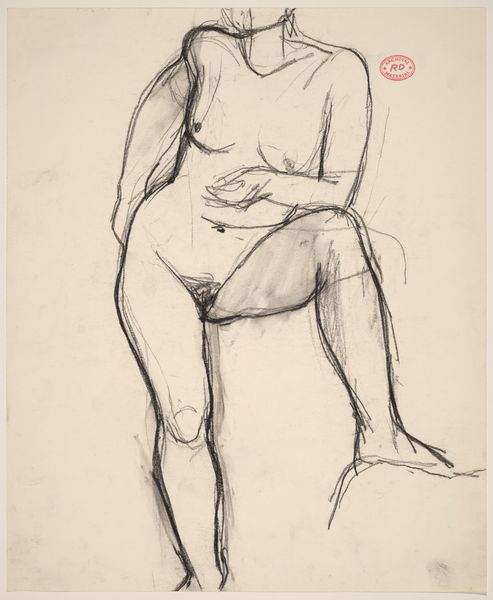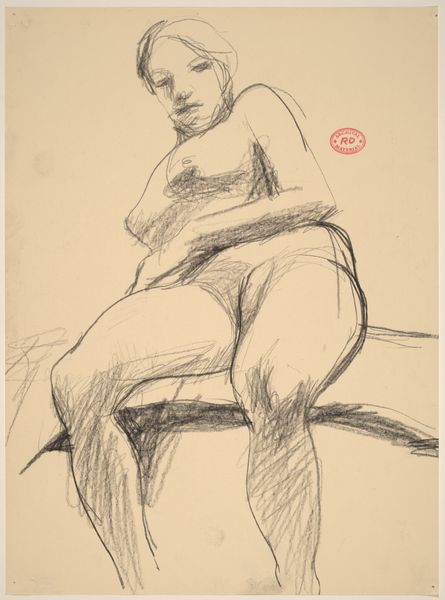![Untitled [reclining female nude before a patterned backdrop] by Richard Diebenkorn](/_next/image?url=https%3A%2F%2Fd2w8kbdekdi1gv.cloudfront.net%2FeyJidWNrZXQiOiAiYXJ0ZXJhLWltYWdlcy1idWNrZXQiLCAia2V5IjogImFydHdvcmtzLzNkMjVkNTY5LTZkMjktNGVkNS04MTgzLTkxYjAyODU1N2RjMS8zZDI1ZDU2OS02ZDI5LTRlZDUtODE4My05MWIwMjg1NTdkYzFfZnVsbC5qcGciLCAiZWRpdHMiOiB7InJlc2l6ZSI6IHsid2lkdGgiOiAxOTIwLCAiaGVpZ2h0IjogMTkyMCwgImZpdCI6ICJpbnNpZGUifX19&w=3840&q=75)
Untitled [reclining female nude before a patterned backdrop] 1955 - 1967
0:00
0:00
drawing, ink
#
drawing
#
ink drawing
#
figuration
#
bay-area-figurative-movement
#
ink
#
line
#
nude
Dimensions: overall: 43.2 x 35.6 cm (17 x 14 in.)
Copyright: National Gallery of Art: CC0 1.0
Editor: This is an ink drawing by Richard Diebenkorn, created sometime between 1955 and 1967. It's simply titled "Untitled [reclining female nude before a patterned backdrop]". I'm immediately struck by how confidently the lines capture the figure's pose, even though they're quite spare. How would you interpret this work? Curator: This piece is fascinating when considering Diebenkorn’s move from abstract expressionism back towards figuration during that period. The “patterned backdrop” feels like a flattening of domestic space, doesn't it? There’s a deliberate lack of classical idealization here. Editor: I see what you mean. It's more about the act of seeing and representing, rather than some idealized form. Do you think that choice relates to any historical movements or specific discussions on figuration and representation prevalent then? Curator: Absolutely. There's a rejection of the heroic masculine ideal that dominated post-war American art. By focusing on a relaxed, even vulnerable, female nude within a clear domestic interior, Diebenkorn could be seen as engaging with the changing social role of women, even if subtly. And the loose rendering allows us to access not just *who* is depicted, but *how* the act of depicting itself holds socio-political weight. What are your thoughts on how museums play into displaying imagery that shapes popular discourse? Editor: That makes so much sense when contextualized historically. Thinking about how the drawing resists a sense of permanence that an artwork typically projects when displayed in institutions, is very helpful in expanding our perspectives on social and political constructs in art! Curator: Indeed, these are conversations museums must reckon with to accurately contextualize artworks such as this one.
Comments
No comments
Be the first to comment and join the conversation on the ultimate creative platform.
